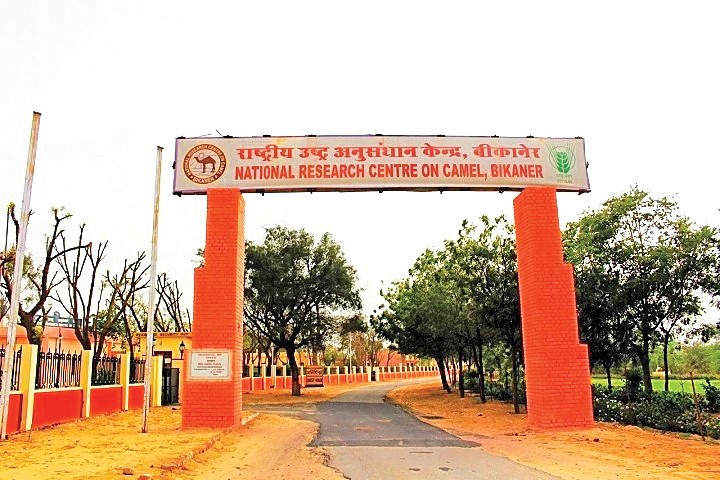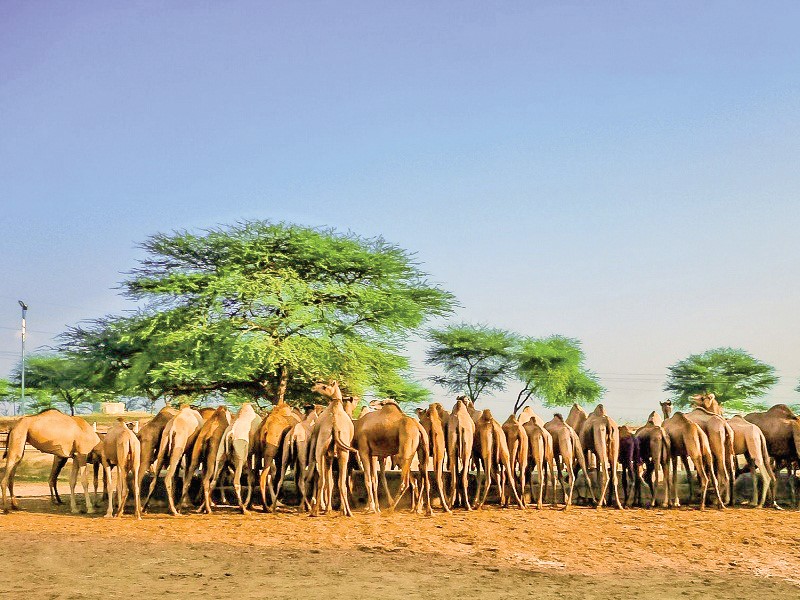The National Research Centre on Camels (NRCC) in Bikaner stands as a unique place showcasing India’s commitment towards preserving and studying these remarkable animals.
A Brief History from Royal Stables to Research Hub
The story of the NRCC begins long before its official establishment in 1984. Bikaner, once the capital of the princely state of the same name, has a rich history of camel breeding. The royal camel stables of the Maharajas of Bikaner were renowned across the region for their high quality camels.
In the years following India’s independence, as the role of camels in transportation and agriculture began to decline, there grew a need to preserve these animals and study their potential of surviving and thriving in the changing world. This led to the establishment of the NRCC under the Indian Council of Agricultural Research (ICAR).

Its More Than Just A Research
At first glance, the 2000-acre campus of the NRCC may look like any other research facility. But after step inside, you’ll find yourself in a world dedicated to all things only and only about camel. The research center’s mission goes beyond just the academic study. It aims to Develop technologies for enhanced camel productivity, transfer technology to farmers and other stakeholders, Act as a repository of information on camel production and health, Conserve and improve camel breeds. Dr. Singh, a scientist at the center, explains, “Our work touches every aspect of camel life – from breeding and nutrition to disease management and product development. We’re not just studying camels; we’re working to secure their future and the livelihoods of those who depend on them.”
Breeds and Preserving Genetic Diversity
India is home to several camel breeds, each adapted to specific environmental conditions. The NRCC works to preserve this genetic diversity. The center maintains herds of the four main Indian camel breeds:
1. Bikaneri: Known for its large size and endurance
2. Jaisalmeri: Prized for its speed and stamina
3. Kachchhi: Adapted to the marshy terrain of the Rann of Kutch
4. Mewari: A smaller breed native to southern Rajasthan
Through careful breeding programs and genetic studies, the center ensures that all these different breeds are preserved for future generations. “Each breed has unique characteristics that could be crucial for adapting to climate change or developing new camel-based products,” notes Dr. Ravi Kumar, head of the animal genetics department.
Keeping Camels in healthy Condition
A significant portion of the NRCC’s work focuses on camel health and welfare. The center houses veterinary facilities and conducts research on various camel diseases. One of the center’s major achievements has been the development of vaccines for common camel ailments. The center also studies camel nutrition, developing feed formulations that can help camels thrive even in harsh desert conditions. This research not only benefits the camels at the center but also helps camel herders across the country improve the health of their animals.
Milk and More into Camel Products
While camels have traditionally been used for transportation and draft work, the NRCC is at the forefront of research into camel products, particularly milk. Camel milk, long consumed by desert communities, is gaining popularity for its potential health benefits.
“Camel milk is lower in fat and lactose compared to cow’s milk, and it’s rich in vitamin C and insulin-like proteins,” explains Dr. Patel. “We’re studying its potential benefits for diabetes management and developing new camel milk-based products.”
The center has developed techniques for processing and preserving camel milk, making it possible to market it more widely. It has also created products like camel milk ice cream, chocolates, and cheese, opening up new economic opportunities for camel herders.
But milk isn’t the only focus. The NRCC also studies other camel-derived products such as Leather known for its durability, Manure is an excellent organic fertilizer, Wool is used in textiles and handicrafts and Bone is used in traditional medicine and crafts.
Extending Knowledge to Herders
The NRCC’s impact extends far beyond its campus boundaries. The center runs extensive outreach programs to share its knowledge with camel herders and farmers. Regular training workshops cover topics like improved breeding practices, health management, and product development. The center also operates a mobile veterinary unit that travels to remote areas, providing healthcare and advice to herders who might otherwise lack access to veterinary services.
Ramesh, a camel herder from a village near Bikaner, attests to the center’s impact: “The training I received at NRCC helped me improve my herd’s health and milk production. Now, I’m able to sell camel milk products in the city, which has increased my income.”
Adapting to Changing Times
Despite its successes, the NRCC faces challenges. The camel population in India has been declining, partly due to mechanization in agriculture and transportation. Changing land use patterns and environmental factors also pose threats to traditional camel herding. The center is also investing in cutting-edge research areas such as Camel based pharmaceuticals by investigating the potential of camel antibodies for medical applications, Genomics to better understand camel genetics and improve breeding programs and Climate change adaptation by studying how camels can cope with increasing temperatures and changing vegetation patterns.
Camel Conservation and Development
The National Research Centre on Camels is a unique institution, a must go to place when in Bikaner to understand more about animals, there you can experience a story from their side and understand how they are bridging the gap between ancient traditions and modern science. Its work not only preserves an important part of India’s cultural heritage but also points the way toward a sustainable future for camels and the communities that depend on them.
Whether you’re a researcher, a camel enthusiast, or simply curious about these remarkable animals, a visit to the NRCC offers a fascinating experience into the world of camels and the people dedicated to their care and study. It’s a reminder that in our rapidly changing world, there’s still room for the wisdom of the desert and the gentle gaze of the camel.























